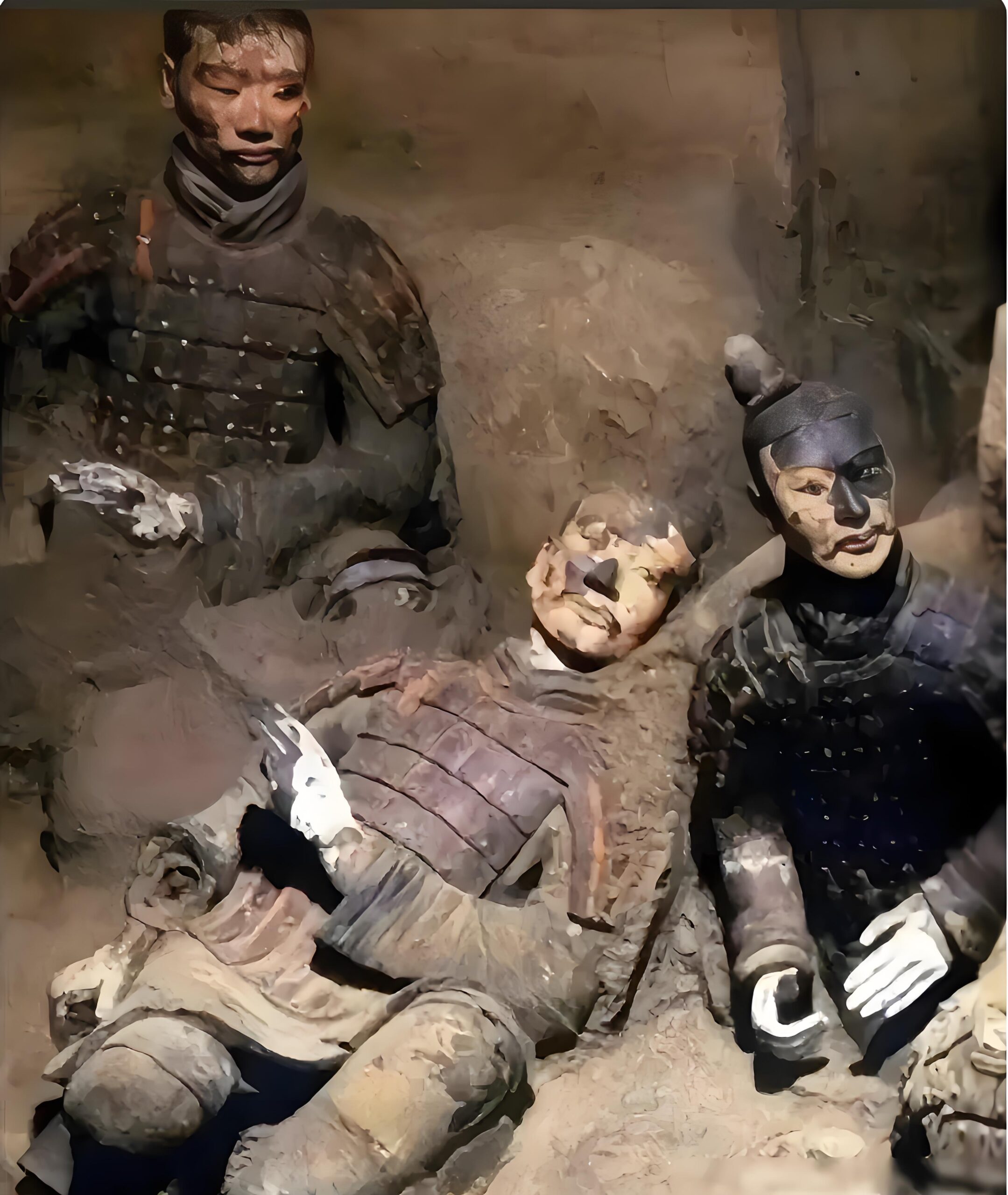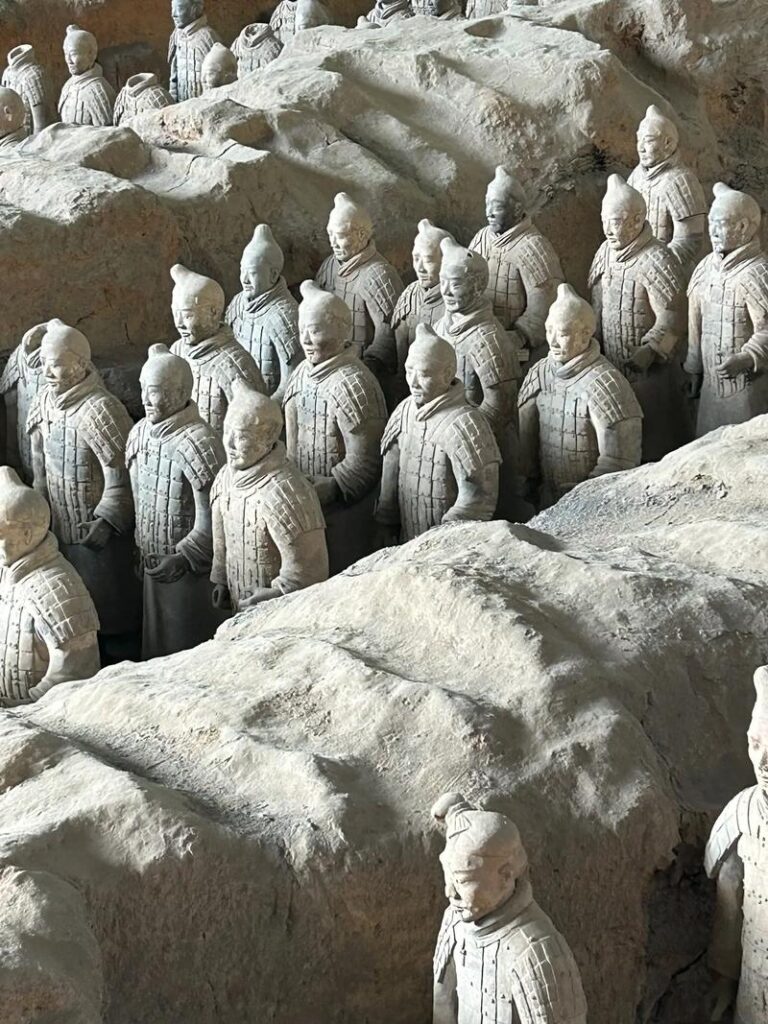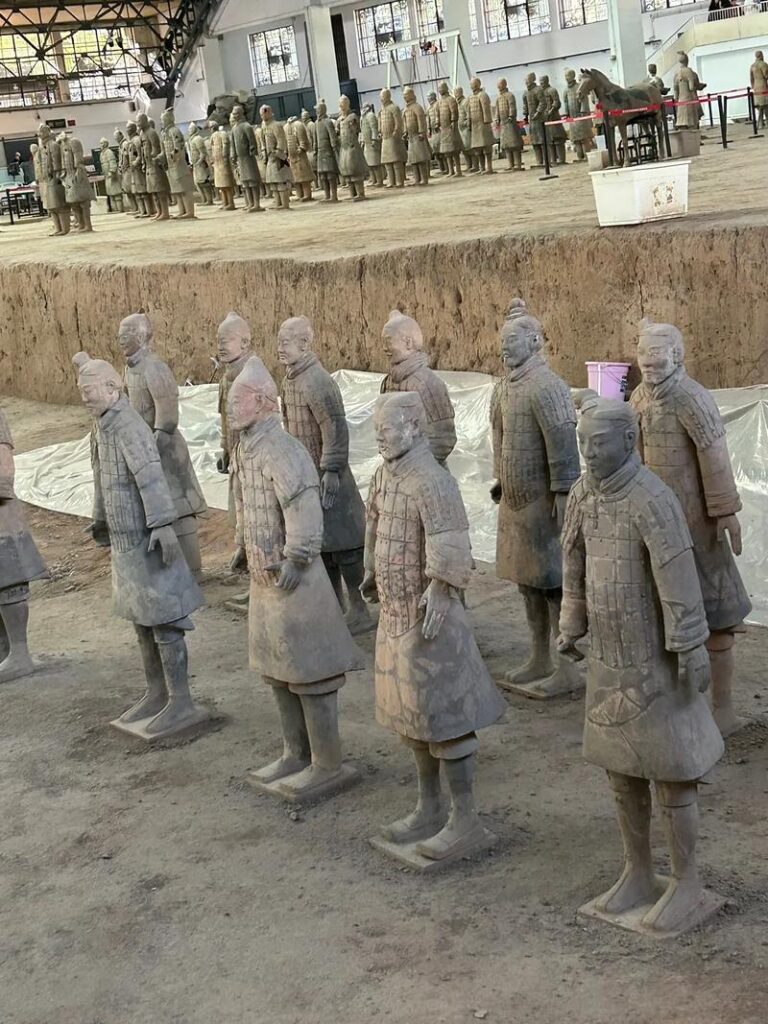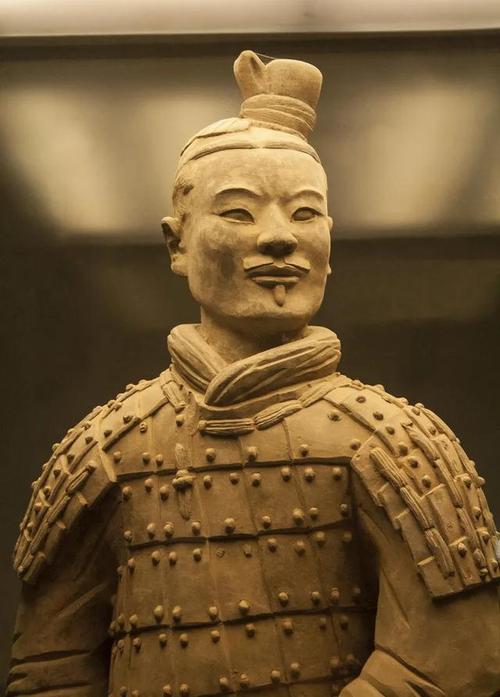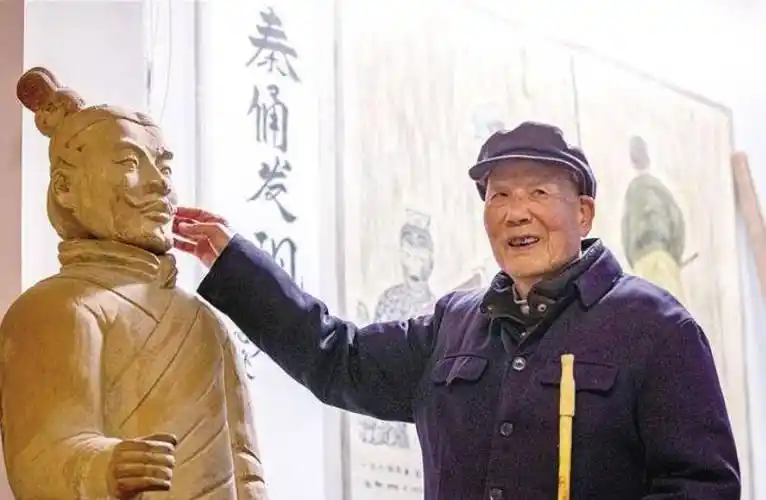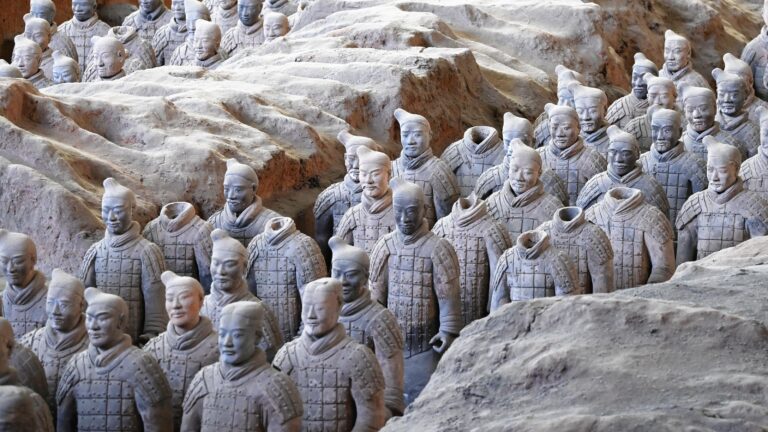What color were the terracotta warriors?
The Colors Stolen by Time: The Colorful Army of Qin Shi Huang’s Terracotta Warriors
As you stand before this solemn array, you are greeted by thousands of grayish terracotta soldiers, silent as the earth, as if they had been this way since their creation. However, allow me to gently lift the veil of history: when these terracotta warriors first came into the world, they were far from this plain appearance—they were once adorned with dazzling, vibrant colors, forming a majestic army ready to march into battle.
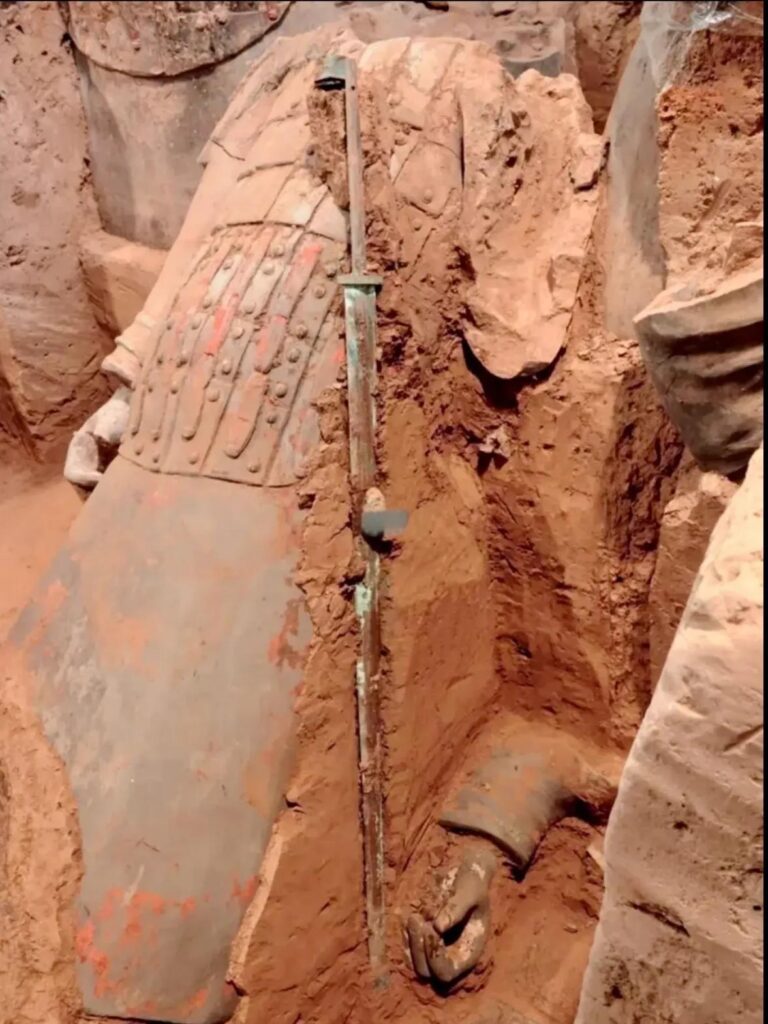
Beneath the gray clay lies a once-vibrant splendor
These terracotta warriors, having traversed over two thousand years of time, now present themselves to the world in their plain, unadorned clay hues. While this gray clay texture indeed evokes a sense of solemn historical weight, it has inadvertently left the world with a significant misunderstanding: as if they were meant to be this plain from the start. This is not the case.
When archaeologists held their breath and carefully brushed away the last handful of yellow earth covering the terracotta warriors, a breathtaking sight emerged: many of the terracotta warriors still bore traces of colorful pigments—some as vibrant as cinnabar red, others as serene as azurite blue, or the warm, jade-like green of malachite… These fleeting traces of color, which have survived the passage of time, are evidence that time has not completely erased them, silently telling the story of how magnificent and dazzling their appearance once was.
Thousand-year-old makeup, exquisite craftsmanship
The fleetingly beautiful attire of the terracotta warriors is a masterpiece of Eastern color artistry. Craftsmen first applied a thin layer of natural lacquer as a base color on the sturdy clay figures—this is the foundation that allows the colors to endure for a thousand years. Then, on this “canvas,” they demonstrated astonishing skill: mineral pigments extracted and refined from ore were ground into fine powder through repeated processing, mixed with natural adhesive, and meticulously applied stroke by stroke to depict the hard texture of armor, the soft texture of battle robes, and the vibrant luster of skin.
Most astonishingly, the Qin people even creatively developed a unique “Chinese purple”—a precious synthetic pigment whose composition and production process remain an intriguing mystery in the history of science and technology. This mysterious purple hue serves as a brilliant metaphor for the Qin Empire’s ambitious aspirations, shining with wisdom that transcends its time over two thousand years ago.
Colors fade, but where lies the truth?
If it was once so magnificent, why is there now only a hazy gray? The mystery of the fading colors lies in the thin layer of raw lacquer beneath. This crucial medium, though capable of preserving vibrant colors, is exceptionally delicate. When buried underground in a stable environment of constant temperature and humidity, the colors remain intact. However, when archaeologists uncover the millennia-old earthen layers, once exposed to air, the sudden changes in humidity and temperature cause the lacquer layer to rapidly dehydrate, curl, and peel off. The exquisite painted decorations adhering to it then fragilely peel away and shatter like moth wings, instantly turning into dust, almost beyond salvage.
The tragedy of fading colors, a reflection on civilization
Witnessing those fleeting, colorful fragments that appear briefly before vanishing, the shock and sorrow we feel are indescribable. This is not merely the fading of color but a irreparable fracture in humanity’s collective memory of civilization. This pain has driven a silent revolution in archaeological and cultural heritage conservation technologies. Today, at excavation sites, experts work with the precision of surgeons: swiftly applying specialized stabilizing agents to secure fragile painted surfaces, using the most advanced instruments to collect three-dimensional data, and combining laboratory analysis with virtual reconstructions to meticulously “restore” their original splendor. Each step is a race against time, a solemn effort to preserve the fading brilliance.
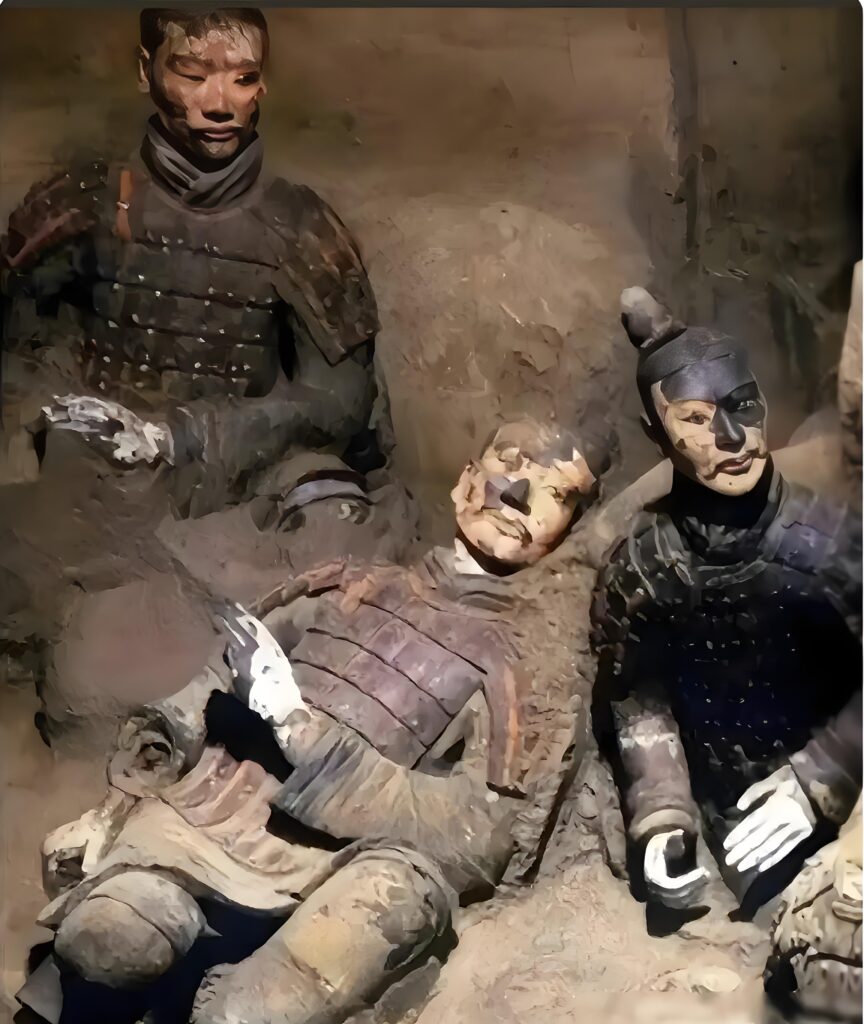
Faded Terra-cotta Warriors, Eternal Inspiration
Looking back at this “gray earth army” that has lost its vibrant colors, their significance transcends visual aesthetics. The remnants of crimson and jade green are tangible expressions of the Qin Empire’s grandeur and unparalleled craftsmanship. Though the painted terracotta warriors may fade, humanity’s steadfast commitment to safeguarding the torch of civilization and its relentless pursuit of innovation shine like stars in the night sky, eternal and unyielding.
This silent terracotta army, at the cost of its own fading colors, poses a profound question to future generations: How should we touch the past with greater tenderness and pass on the torch of civilization that spans the ages with deeper reverence? *Each faded clay figurine is like an overturned palette in the river of history—it reminds us that true eternity does not lie in clinging to color, but in safeguarding the unyielding light of civilization that illuminates humanity’s path.

